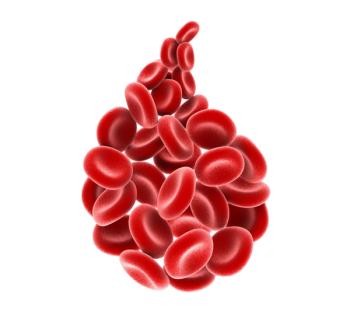
Disparities in Suicide Risk Following Cancer Diagnosis Identified
Suicide risk increased among patients who had a lower-income and lived in rural counties following a cancer diagnosis.
Following a cancer diagnosis, patients’ income level and rural or urban living status may have a negative impact on psychological health leading to suicide, with investigators highlighting the need for further research and accessible mental health services in order to address these disparities, according to a study published in JAMA Network Open.
Investigators determined that patients living in the lowest income counties had the highest risk of suicide (standard mortality ratio [SMR] 1.94; 95% CI, 1.76-2.13) compared with those living in the highest-income counties (SMR, 1.30; 95% CI, 1.26-1.34). Additionally, patients living in rural areas had a higher risk of suicide (SMR, 1.81; 95% CI, 1.70-1.92) compared with urban areas (SMR, 1.35; 95% CI, 1.32-1.39). After 10 or more years following a cancer diagnosis, patients in the lowest-income counties remained at risk (SMR, 1.83; 95% CI, 1.31-2.48).
Data pulled from the SEER databased included a total of 5,362,782 patients diagnosed with cancer living in 635 counties. Most patients in this study were men (51.2%) and White (72.2%), with almost half being older than 65 years of age (49.7%). The majority of patients resided within the highest-income counties (75.9%), 5.6% of patients were from the lowest income counties, 87.4% were from urban areas, and 12.6% were from rural counties. During follow-up, 6357 patients died from suicide, with 71.1% coming from the highest-income counties, and 84.3% from urban counties.
Although investigators reported that those who were 65 years of age or older had the largest disparities across county level factors (first quartile SMR, 2.20; 95% CI, 1.93-2.49; fourth quartile SMR, 1.43; 95% CI, 1.37-1.49), disparities were similar across age groups. Additionally, larger disparities in county level income were observed in men (first quartile: SMR, 2.09; 95% CI, 1.89-2.31 vs fourth quartile: SMR, 1.32; 95% CI, 1.28-1.36) vs women (first quartile: SMR, 1.40; 95% CI, 1.05-1.82 vs fourth quartile: SMR, 1.22; 95% CI, 1.14-1.31).
White patients who resided within lower-income counties had a higher SMR (SMR, 2.01; 95% CI, 1.82-2.21) compared with the highest-income counties (SMR, 1.42; 95% CI, 1.37-1.46). Investigators also reported that Asian/Pacific Islander patients who were living in the highest-income counties had a 2-fold increase in suicide compared with those living in the lowest-income counties. Hispanic patients diagnosed with cancer living in the lowest income countries did not appear to have a significant increase in suicide (first quartile: SMR, 1.26; 95% CI, 0.69-2.11), and those in the highest-income counties had a significantly lower risk of suicide (fourth quartile: SMR, 0.63; 95% CI, 0.55-0.71) compared with the general population.
The highest risk of suicide regardless of income or living status was within 1 year of diagnosis. After 10 years, patients in the highest-income counties or rural/urban status did not have an increased risk of death.
From 2000 to 2010, patients in the lowest-income counties had an SMR decline (annual percentage change [APC], −5.90%; 95% CI, −12.92% to −0.31%), and plateaued from 2010 to 2015 (APC, 4.80%; 95% CI, −19.97% to 37.24%). Those in the highest-income counties had an SMR decline from 2000 to 2005 (APC, −8.31%; 95% CI, −15.75% to −0.21%), and there was no significant change from 2005 to 2015 (APC, 2.03%; 95% CI, −0.97% to 5.13%). Those in rural counties had a decrease of SMR from 2000 to 2004 (APC, −15.48%; 95% CI, −28.45% to −0.17%), then a plateau from 2004 to 2015 (APC, 1.83%; 95% CI, −1.98% to 5.79%). Patients in urban counties did not have a significant SMR change between 2000 to 2015 (APC, −0.59%; 95% CI, −2.20% to 1.05%).
Suicide rates were higher for patients diagnosed in counties with less education, higher unemployment rates, and more Black residents. Patients in rural counties had a higher suicide risk, but only in those with the highest-income quartile compared with urban counties (SMR, 1.58; 95% CI, 1.35-1.84 vs 1.29; 95% CI, 1.25-1.33). The highest suicide risk was found in counties with the lowest-income quartile and that had more than 50% Black residents (SMR, 2.47; 95% CI, 1.84-3.25). Rural counties that had more than 50% of Black residents also had the highest suicide rate (SMR, 3.51; 95% CI, 2.12-5.49).
Reference
Suk R, Hong YR, Wasserman RM, et al. Analysis of suicide after cancer diagnosis by US county-level income and rural vs urban designation, 2000-2016. JAMA Netw Open. 2021;4(10):e2129913. doi:10.1001/jamanetworkopen.2021.29913
Newsletter
Stay up to date on recent advances in the multidisciplinary approach to cancer.


















































































